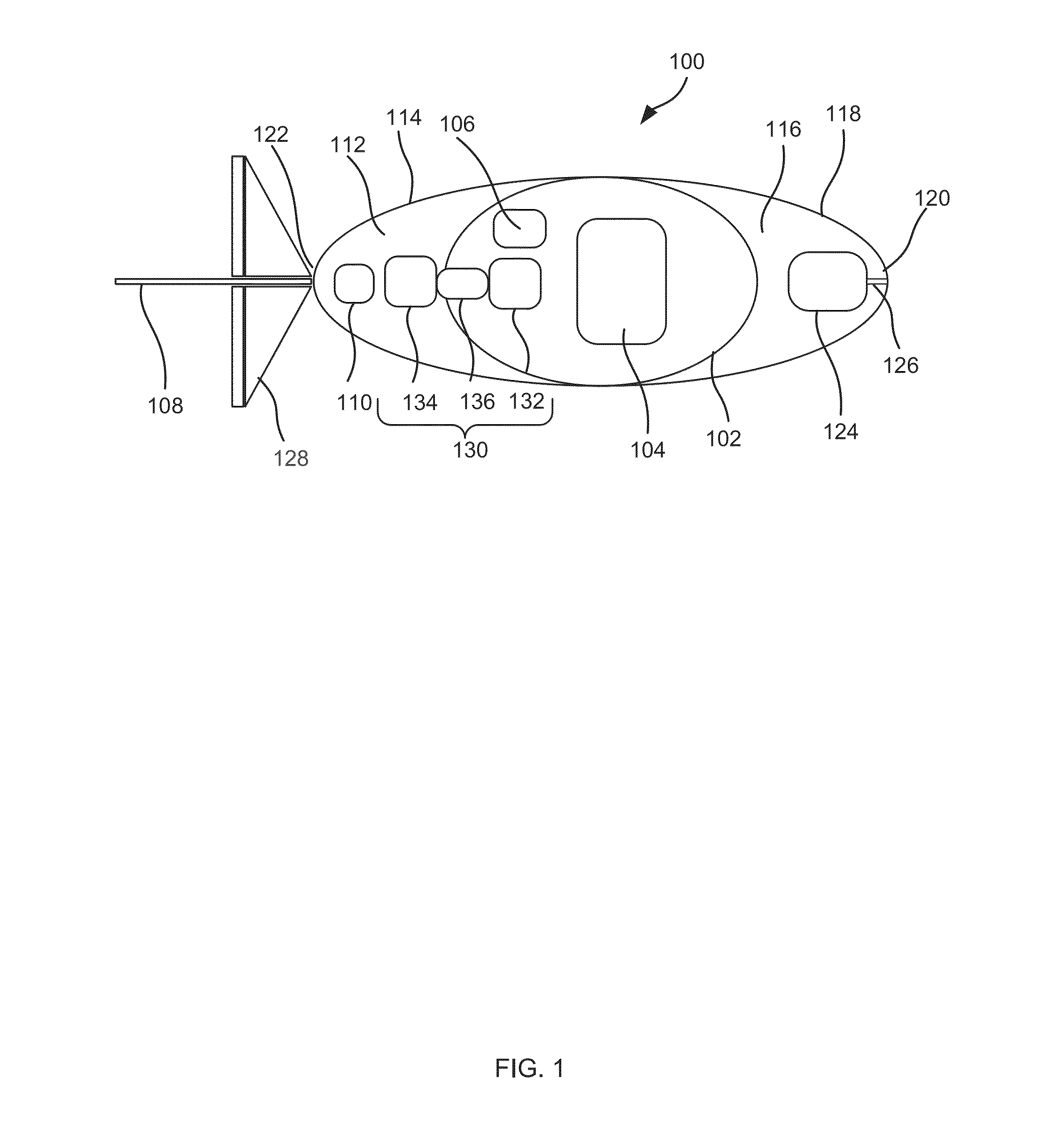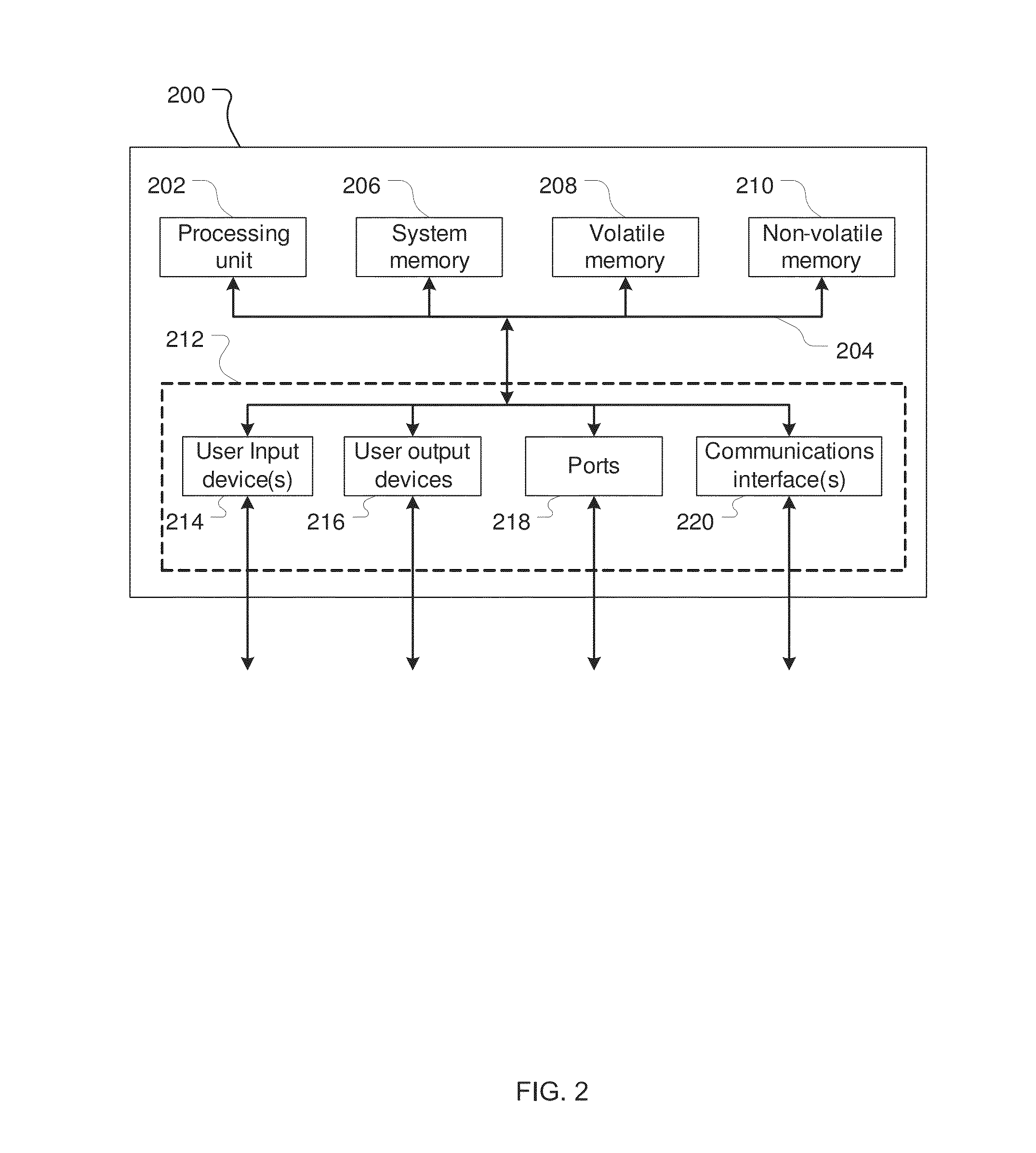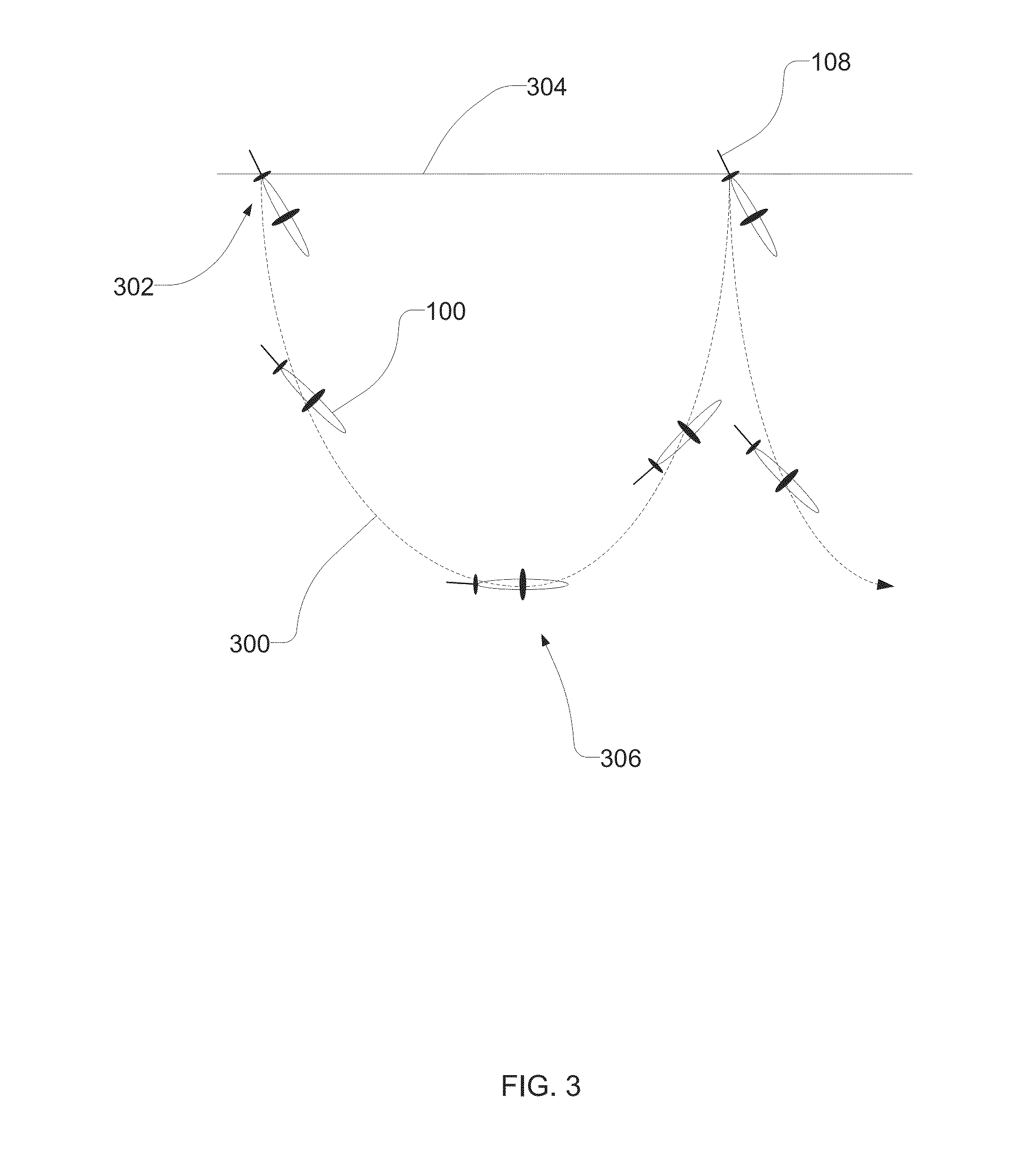Underwater vehicle and sensor
a sensor and underwater technology, applied in underwater equipment, special-purpose vessels, instruments, etc., can solve the problems of limited data collection, high cost of vehicles, and large sensors, and achieve the effect of increasing the number of sensors
- Summary
- Abstract
- Description
- Claims
- Application Information
AI Technical Summary
Benefits of technology
Problems solved by technology
Method used
Image
Examples
Embodiment Construction
[0050]An underwater vehicle used in accordance with an embodiment of the present invention can be any suitable vehicle adapted to travel at an appropriate depth (e.g., 1,000-6,000 m) and adapted to carry a water sampling and sensor arrangement as described below.
[0051]1. Autonomous Underwater Vehicle
[0052]In accordance with the embodiment shown in FIG. 1, the underwater vehicle is an autonomous underwater vehicle (AUV) 100, for example of the type described in U.S. Pat. No. 8,381,672 entitled “Systems and methods for compensating for compressibility and thermal expansion coefficient mismatch in buoyancy controlled underwater vehicles” which is hereby incorporated by reference.
[0053]The AUV 100 includes a pressure hull 102 that provides a sealed compartment, an aft cavity 112 formed by the aft fairing 114, and a forward cavity 116 formed by the forward fairing 118. Both the aft and forward cavities 112, 116 have a generally elliptical ogive shape or another suitable hydrodynamic shap...
PUM
| Property | Measurement | Unit |
|---|---|---|
| depths | aaaaa | aaaaa |
| depth | aaaaa | aaaaa |
| speed | aaaaa | aaaaa |
Abstract
Description
Claims
Application Information
 Login to View More
Login to View More - R&D
- Intellectual Property
- Life Sciences
- Materials
- Tech Scout
- Unparalleled Data Quality
- Higher Quality Content
- 60% Fewer Hallucinations
Browse by: Latest US Patents, China's latest patents, Technical Efficacy Thesaurus, Application Domain, Technology Topic, Popular Technical Reports.
© 2025 PatSnap. All rights reserved.Legal|Privacy policy|Modern Slavery Act Transparency Statement|Sitemap|About US| Contact US: help@patsnap.com



